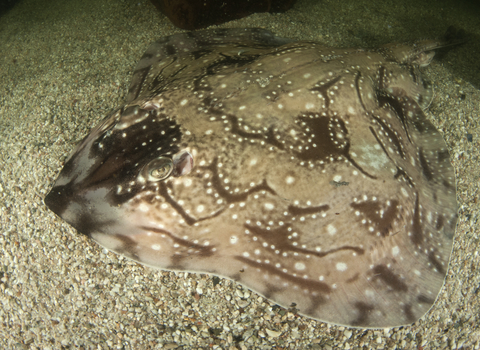
Undulate ray ©Peter Verhoog
Undulate ray
The undulate ray has beautiful wavy patterns on its back, which helps it camouflage against the sandy seabed.
Enw gwyddonol
Raja undulataPryd i'w gweld
Present all year roundSpecies information
Ystadegau
Length: Up to 90 cmWeight: Up to 10kg
Average Lifespan: Can live for more than 20 years
The undulate ray is listed as Endangered by the IUCN Red List and is a Priority Species under the UK Post-2010 Biodiversity Framework.
Habitats
Ynghylch
Undulate rays live on soft seabeds like sand and mud where they can bury themselves underneath the sediment. Instead of teeth, they have crushing plates which help them to feed on their diet of crustaceans.Although it is commonly called the undulate ray, it is actually a species of skate (sometimes known as the undulate skate). Skates and rays are closely related and look similar, but you can spot the difference by looking at the tail. Skates have a short tail with small fins and no stinging capabilities, whereas rays have a long whip-like tail.
